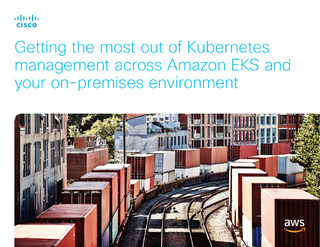Containers have become the new infrastructure standard for development teams. While the “DIY container approach” (un-orchestrated containers) still has its use cases (e.g. low latency, longer compute jobs, predictable traffic), production-grade deployments require orchestration. DevOps teams are increasingly leveraging the benefits of Kubernetes and accelerating its adoption, taking it from a 27% adoption rate in 2018 to a 48% adoption rate in 2019 according to the RightScale “2019 State of the Cloud Report,” from Flexera. The same report also positions Amazon Elastic Kubernetes Service (Amazon EKS) as one of the fastest-growing managed Kubernetes offerings available, with a 44% adoption rate.
Previously, containers were a technology deployed by individual teams – and were typically used for “application testing” in the enterprise world. Today, many organizations are now not only seeing the benefits of operationalizing containers to deploy production applications, but also re-positioning containers as a core part of their technology strategy.


